


































Midweek Updates 25 April 2024
Google Banner Ad
This week in Midweek Updates
Daher increases the production capacity for its Kodiak multi-role aircraft at the company's Sandpoint, Idaho industrial site.
Diamond aircraft takes flight with Trakka's cutting-edge imaging technology.
Equatorial Guinea acquires Z-9WE helicopters from China.
First Nigerian M-346s to be delivered by year-end.
Piper Aircraft partners with DeltaHawk engines to explore diesel power for PA-44 Seminole.
GAMA - accelerating the development of the electric aviation sector in Europe.
UK Ministry of Defence orders more H145 helicopters.
ACE program achieves world first for AI in aerospace.
Independent report reveals significant contribution of Eurofighter programme to European economies and jobs.
This week in history -
Worldwide Incidents and Accidents.
Bonus video - Nashua & Ecko Unlitd Extra 300s Rand to Baragwaneth
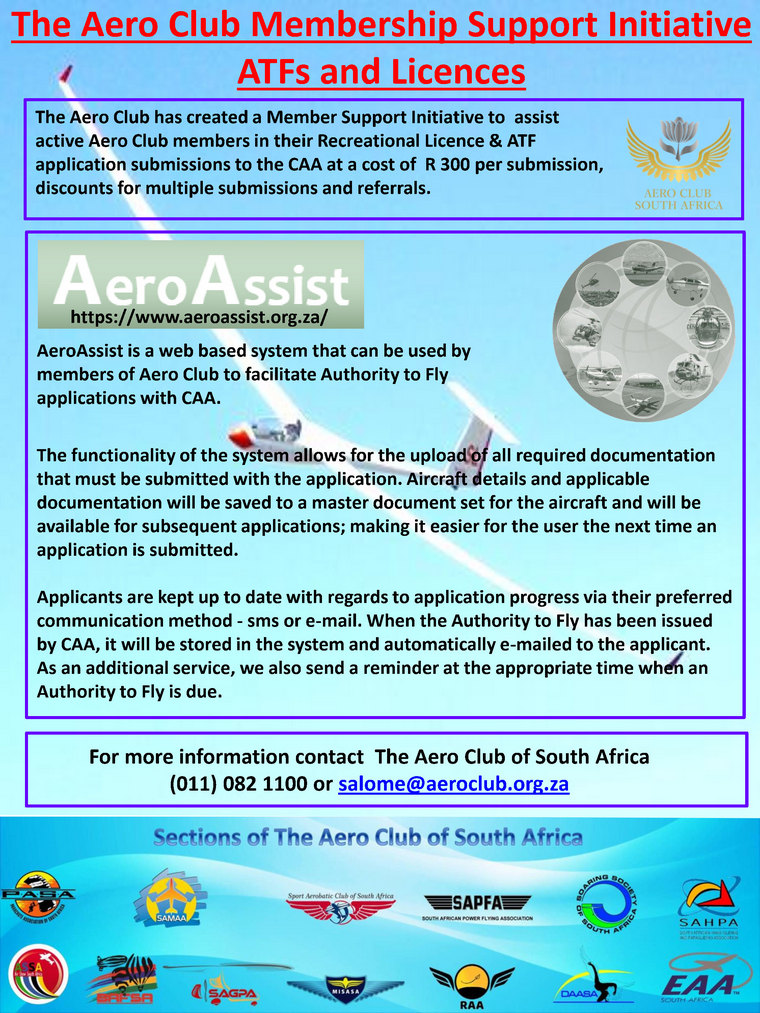



DAHER INCREASES THE PRODUCTION CAPACITY FOR ITS KODIAK MULTI-ROLE AIRCRAFT AT THE COMPANY'S SANDPOINT, IDAHO INDUSTRIAL SITE
Daher's Aircraft Division today announced the startup of increased production capacity for its Kodiak 100 and Kodiak 900 multi-role utility aircraft at the company's manufacturing and final assembly facility in Sandpoint, Idaho.
This Kodiak production evolution was detailed by Nicolas Chabbert, Senior Vice President of Daher's Aircraft Division, during the company's show-opening press conference at the SUN 'n FUN Aerospace Expo in Lakeland, Florida. He also provided the stepped-up production targets for Kodiak aircraft in 2024: an increase to 25, compared to the total of 18 during 2023.
"Kodiak's well-earned reputation as the legendary 'go anywhere' utility aircraft has been further enhanced since Daher's 2019 acquisition of the product line, and its popularity continues to grow - with a current two-year order backlog," Chabbert told reporters at the press conference. "The production enhancement announced today responds to the strong demand across the customer base - from private owners/operators to government agencies and special mission operators for applications such as wildfire suppression, environmental monitoring, law enforcement and medical evacuation."
Sandpoint's increased production capacity results from the addition of a second final assembly line that "mirrors" the build-up of Kodiaks once the basic airframe has been assembled. As a result, there now are separate, parallel integration steps for the Kodiak 100 and Kodiak 900 from Stages 3 to 6, involving wing and horizontal stabilizer mating; flight controls integration and rigging; engine and avionics installation; first flight; interior outfitting, and customer delivery.
"These parallel assembly lines were developed using our internal resources, fully benefiting from support across the Sandpoint team," explained Kerry Olson, Daher's Director of Kodiak Operations and Site Leader at Sandpoint. "The parallel production came on-line ahead of schedule, which is another point of pride for everyone at the facility."
The increased production capacity follows other improvements at Sandpoint implemented by Daher, notably the investment of $2.7 million in a 9,000-sq-ft. aircraft painting facility that streamlined the overall production process and further improved the build quality for Kodiak 100s and Kodiak 900s.
To date, a combined total of 330 Kodiak 100s and Kodiak 900s have been delivered to owners and operators worldwide. The most recent Kodiak 900 - the seventh to date - was received by a private owner in March.
Enhancements in the Kodiak product line under Daher's ownership include the Kodiak 900 version, which was unveiled in 2022. Inheriting the cornerstone Kodiak 100's remarkable qualities as a backcountry STOL (short takeoff and landing) multi-role airplane, the Kodiak 900 has a fuselage length extension of 3.9 feet to provide more passenger room and cargo space, a cruise speed increase to 210 KTAS, and a greater useful load while offering a maximum range of 1,129 nautical miles.
The Kodiak 100 has been improved as well, beginning with Daher's 2021 introduction of the Series III version that provides greater cabin comfort, augmented operational capabilities from both unimproved strips and on water with floats, as well as upgraded quality and more comprehensive maintenance coverage. Additionally, Daher is now delivering new-production Kodiak 100s equipped with a five-blade Hartzell composite propeller - which also is offered for retrofit on in-service Kodiak 100s.

DIAMOND AIRCRAFT TAKES FLIGHT WITH TRAKKA'S CUTTING-EDGE IMAGING TECHNOLOGY
Diamond Aircraft, a world leader in innovative, fuel-efficient aircraft, and Trakka Systems, a pioneer in advanced multispectral imaging solutions, recently collaborated on a successful demonstration of Trakka's new long-range TC-375 EO/IR imager, integrated onto a Diamond DA62 MPP aircraft. The week-long mission yielded exceptional results, showcasing the system's capabilities in Intelligence, Surveillance, and Reconnaissance (ISR) and Search and Rescue (SAR) applications.
This collaboration builds upon a strong, seven-year partnership between the two companies. Diamond Aircraft, recognized for its commitment to safety, performance, and efficiency, has served as both an integrator and OEM (Original Equipment Manufacturer) for Trakka's advanced imaging systems. This successful demonstration further strengthens their collaborative efforts in pushing the boundaries of aerial technology.
The TC-375 EO/IR imager is a long-range, gyro-stabilized, multispectral imaging system designed to deliver exceptional image clarity and situational awareness in diverse environments. Featuring full HD (1080p) resolution for both integrated EO and IR sensors, the TC-375 provides operators with clear, highly detailed imagery in both daylight, low-light, complete darkness, and degraded atmospheric conditions such as fog, haze, and smoke.
The system's long-range optics boast uninterrupted, continuous zoom, further enhanced by the next-generation image processing engine. This powerful combination empowers users with two key advantages: maximum stand-off range and the ability to dramatically enhance imagery and even blend the EO and IR channels to reveal hidden details, all at any distance.
"The mission tests with Diamond Aircraft were highly successful," said Adam Boniecki, European Sales Manager at Trakka Systems. "The TC-375 performed exceptionally well, delivering clear and actionable imagery for both ISR and SAR operations. The TC-375's exceptional performance, ITAR-free single LRU design makes it an ideal choice for the DA62 MPP platform. We are excited to continue collaborating with Diamond Aircraft and explore further collaboration in the future."

The successful demonstration of the TC-375 on the Diamond DA62 MPP aircraft highlights the synergies between Trakka's cutting-edge imaging solutions and Diamond Aircraft's commitment to providing versatile and reliable platforms.
The DA62 MPP is the latest variant of Diamond Aircraft's successful Special Mission Aircraft portfolio. The all-carbon-fibre, twin-engine aircraft is equipped with a state-of-the-art glass cockpit and a fully integrated autopilot. It is powered by two turbo charged jet-fuel engines with superb fuel efficiency. The carbon fibre material provides for unlimited airframe life and is not subject to corrosion, even when operated in saline and humid environments. Together, fuel efficiency and the unlimited airframe life combine for extremely low direct operating costs, making the DA62 MPP the most cost-efficient Special Mission Aircraft in its class.

Guy Martin www.defenceweb.co.za
This is according to the country's ruling Democratic Party (Partido Democrático de Guinea Ecuatorial), which reported that Vice President Teodoro Nguema Obiang Mangue had on 8 April inspected the newly acquired aircraft.
With a capacity to carry eight people, the aircraft are fitted with nose-mounted electro-optical gimbals for day and night surveillance, and hardpoints for weapons, which can include guns, rockets and anti-tank missiles.

The Z-9WE is the export version of the Z-9W light attack helicopter, based on the Chinse built version of the Airbus AS365 Dauphin. The Z-9W is in Chinese military service and has also been exported, including to African customers. Four helicopters were delivered to the Kenyan Armed Forces between 2010 and 2011, for example.
Equatorial Guinea has in recent years acquired a significant amount of military hardware from China. According to the Stockholm International Peace Research Institute's arms transfers database, the West African nation acquired from China two dozen Red Arrow-8 anti-tank missiles in 2021; a landing ship in 2009; half a dozen SM-4 self-propelled mortars in 2018; and two dozen WZ-551 armoured personnel carriers.
The air force branch of the nation's military has been expanding rapidly in recent years, following a period of virtual non-existence. Recent additions over the last two decades include two L-39s, four Su-25s, an An-32, an Mi-26, two An-72 transports and six Mi-24 attack helicopters from Ukraine. Russia supplied a couple of Mi-17 transport helicopters in 2006 and 2018. Ukraine also supplied a single Ka-29 helicopter for naval use in 2009.


www.defenceweb.co.za
The Nigerian Air Force (NAF) will take delivery of its first M-346 combat aircraft by the end of this year from Italy's Leonardo. This is according to Leonardo's Vice President of Sales Africa, Claudio Sabatino, who last week told Chief of Air Staff (CAS), Air Mashal Hasan Abubakar, of Leonardo's commitment to delivering the first batch of six M-346s before the end of 2024.
The Nigerian Air Force is acquiring 24 M-346 fighter aircraft "in a move that marks a significant step in NAF's ongoing efforts to modernise its fleet as well as bolster its operation effectiveness," it said. The aircraft are expected to be delivered in four tranches of six each. The deal was first announced two years ago.
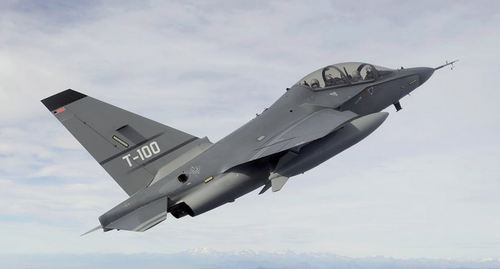
Sabatino assured Abubakar that maintenance of the M-346 fleet would not be a challenge as there is a binding agreement for Leonardo's maintenance support for 25 years.
Abubakar said the M-346s will be used for training as well as close air support, air interdiction, and tactical reconnaissance.
The M-346s are part of a multitude of new aircraft being acquired for the NAF, including six T-129 attack helicopters from Turkish Aerospace Industries, two Beechcraft King Air 360 transports, four Diamond DA-62 surveillance aircraft, 12 Agusta A109 Trekker helicopters, and three Wing Loong II unmanned combat aerial vehicles (UCAVs). The Nigerian Army is acquiring a dozen Cayuse Warrior Plus helicopters from MD Helicopters.
Last year the NAF said it had been effectively using new assets in combat and these were instrumental in defeating terrorists and insurgents. Battlefield successes against Boko Haram and other terrorist groups were attributed to the newly acquired JF-17 Thunder aircraft, A-29 Super Tucano aircraft, and UCAVs.

"We are thrilled to collaborate with Piper Aircraft on this exciting project," said Christopher Ruud, CEO of DeltaHawk. "Our advanced Diesel engine technology has been developed to meet the evolving needs of the aviation industry, and we see tremendous potential in integrating it into Piper's PA-44 Seminole. This partnership underscores our commitment to driving innovation and sustainability in aviation."
The MOU outlines the development of a Supplemental Type Certificate (STC) for the installation of DeltaHawk's Diesel engine into both new and retrofit Seminole aircraft. This partnership signifies a commitment to exploring alternative propulsion solutions that offer enhanced efficiency, performance, and sustainability in general aviation.
"We are excited for this collaboration to install the DHK engine into the Seminole for many reasons, especially knowing the reliability of DeltaHawk's engines," said Marc Ouellet, VP of Engineering and Manufacturing at Piper Aircraft. "We are constantly seeking opportunities to innovate and advance our aircraft offerings. Working with DeltaHawk on this project aligns with our mission to explore cutting-edge technologies that can deliver significant benefits to our customers and the industry as a whole."
Based in Racine, Wisconsin, DeltaHawk Engines is a privately held manufacturer of advanced-design FAA-certified jet-fueled piston engines for general aviation aircraft and hybrid power systems. DeltaHawk holds numerous patents for its clean-sheet engine designs, and its team of engineers, designers, manufacturing specialists, and certification experts is building an entirely new generation of revolutionary piston engines.
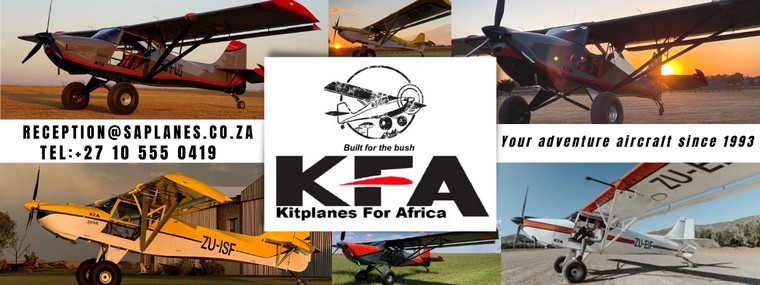
This week, the General Aviation Manufacturers Association announced, during its press conference at Aero Friedrichshafen, the publication of a white paper entitled "Recommendations for Accelerating the Development of the Electric Aviation Sector in Europe." The paper proposes important recommendations for European regulators and policymakers to support the emerging sector of electric aviation.
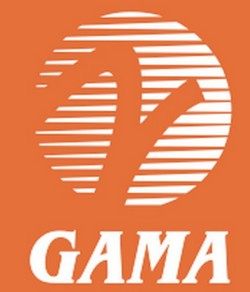
"General aviation is at the forefront of developing and introducing innovative technologies that will transform the entire aviation industry. We look forward to furthering our ongoing work with the European Commission and EASA so that they have a fuller understanding of the vital role that they will play in advancing this sector, which is the incubator for safety, sustainability and innovation," said Kyle Martin, Vice President, European Affairs, GAMA.


DARPA's Air Combat Evolution (ACE) program has achieved the first-ever in-air tests of AI algorithms autonomously flying an F-16 against a human-piloted F-16 in within-visual-range combat scenarios (sometimes referred to as "dogfighting").
In flight, the ACE AI algorithms controlled a specially modified F-16 test aircraft known as the X-62A, or VISTA (Variable In-flight Simulator Test Aircraft), at the Air Force Test Pilot School at Edwards Air Force Base, California, where all demonstrations of autonomous combat manoeuvres took place in 2023 and are continuing in 2024.

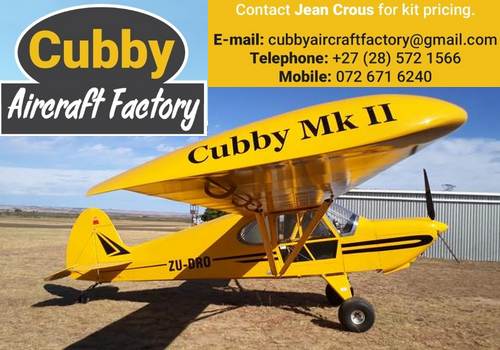
The UK Ministry of Defence has ordered a further six Airbus H145 helicopters as the next step in renewing its rotary fleet and cutting the number of different types in service.
The new aircraft will be deployed to Cyprus primarily for emergency response duties and to Brunei to support UK military training in jungle warfare and will replace Airbus Pumas currently performing those roles.
Airbus Helicopters in the UK Managing Director Lenny Brown said: "We congratulate the MoD on this smart acquisition which simultaneously provides the right-sized helicopter for the Cyprus and Brunei requirements, represents excellent value for the UK taxpayer, and is another key step in the rationalisation of types in the transport helicopter fleet."
"The H145 Jupiter, and its sister H135 Juno, continue to demonstrate exceptional reliability and versatility in the training role in the Military Flying Training System (MFTS) and will bring these crucial attributes to their new tasks."
The new helicopters will be delivered next year and will serve in parallel with 29 H135s and seven H145s in the Defence Helicopter Flying School which trains all UK military pilots as part of MFTS at RAF Shawbury. The enlarged H145 fleet brings economies of support costs and substantially reduces pilot conversion training time.
The latest version of Airbus' best-selling H145 adds an innovative five-bladed rotor to the multi-mission H145, increasing the useful load of the helicopter by 150 kg. The simplicity of the new bearingless main rotor design eases maintenance operations, improves serviceability and reliability, and enhances flight comfort for both passengers and crew.
Worldwide there are more than 1,675 H145 family helicopters in service, with a total of more than 7.6 million flight hours. Powered by two Safran Arriel 2E engines, the H145 is equipped with a full authority digital engine control (FADEC) and the Helionix digital avionics suite. It includes a high performance 4-axis autopilot, increasing safety and reducing pilot workload. Its particularly low acoustic footprint makes the H145 the quietest helicopter in its class, while its CO2 emissions are the lowest among its competitors.

An independent report published recently by Strategy &, part of the PwC network, has revealed the impressive scale of the Eurofighter Typhoon programme's contribution to economies across Europe.
It provides a comprehensive look into the programme and delivers compelling data showing the current economic benefits of the programme as well as anticipating future economic contributions, focusing in particular on the next 10 years.
The "base scenario" takes into account orders for new Eurofighter Typhoons from Spain (Halcon I and II) and Germany (Quadriga). This scenario shows that, for the next decade, the programme is set to contribute €58 billion to the GDP of the four core nations' economies; generate tax revenues of €14 billion for the respective governments; and support 62,700 jobs annually.
Those numbers increase significantly in the report's "growth scenario" with opportunities for sales of approximately 200 Eurofighter Typhoons on the domestic and export market.
This scenario shows, for the next decade, a programme contribution of €90 billion to GDP; tax revenues of €22 billion generated; and more than 98,000 jobs each year. The benefit of future export opportunities would mean that around 30 per cent of the core nation investment would return as tax revenues.
Giancarlo Mezzanatto, Chief Executive Officer at Eurofighter Typhoon, said: "The vital role that the Typhoon performs to keep Europe's skies safe is widely known to all, however people are often less aware about the incredible economic benefits that the programme also brings.
"The Eurofighter Typhoon programme directly boosts European economies and supports tens of thousands of crucial aerospace jobs - benefiting the communities where we live and work. There is also significant spill over in regions where Eurofighter production lines are located and where the programme often sustains SMEs, start-ups and educational institutions.
"Therefore, new Eurofighter Typhoon orders are essential to sustain and retain defence industry production assets in Europe. This will guarantee national and European technological independence, and industrial knowhow resilience, to the core nations over a long period."
Additional data published in the strategy& report shows that through the whole operational life of a single Eurofighter Typhoon aircraft, the contribution to the four core nations is €407 million of GDP and €100 million of taxes.



12 APRIL 1918

Richthofen was born in Kleinburg, near Breslau, Lower Silesia (now part of the city of Wroclaw, Poland), on 2 May 1892 into a prominent Prussian aristocratic family.
Richthofen sustained a serious head wound on 6 July 1917, during combat near Wervik, Belgium against a formation of F.E.2d two-seat fighters of No. 20 Squadron RFC, causing instant disorientation and temporary partial blindness. He regained his vision in time to ease the aircraft out of a spin and execute a forced landing in a field in friendly territory. The injury required multiple operations to remove bone splinters from the impact area.
Credit for his kill is given to Canadian Cpt Roy Brown, but this is disputed by others who claim that he was killed by ground fire from Australian troops.
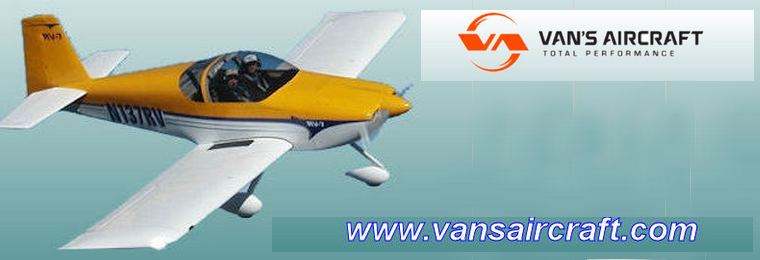

South Africa, near Touwsrivier, A Sling 4 made a forced landing on the R46 near Touwsrivier, Western Cape close to the Aquila nature reserve. The pilot survived; the aircraft suffered substantial damage.
Kenya, Sindar area, western Kenya: A Kenya Air Force Bell UH-1H Huey II, operated by the 53 Tactical Helicopter Squadron, crashed under unknown circumstances in the Sindar area, western Kenya. Ten occupants died and two survived suffering serious injuries and the helicopter caught fire and was destroyed. Among the dead was Kenya Chief of Defence Forces General Ogolla.
Japan, 280 km east of Torishima island, Izu islands: Two Japan Maritime Self-Defence Force (JMSDF) Mitsubishi SH-60K's have crashed near Torishima island, Izu islands. They were executing a night time anti-submarine warfare exercise with third SH-60K, JMSDF submarines and fleets at the time of the accident and both belong to Fleet Air Wing 22, one is based at Omura Air Base (OMJ/RJDU; 8416) and the other at Komatsujima (RJOP; 8443). The first SH-60K, 8416 lost radio/radar contact at 22:38 LT and a distress signal was received at one minute later. The second SH-60K was also found lost contact at 23:04 LT. Each helicopter carried four crew members. Search and rescue operations are being conducted. Just after the losses, some debris including rotor blades and helmets of the crew were found floated over the sea and one dead body has been retrieved. Remaining seven are still missing. The flight recorders of both SH-60Ks were recovered at close location each other. The cause of the accident is supposed to be a mid-air collision. The weather at the time was fine and could not be a factor.
Australia, Preston Beach, WA: The Legend 600 LSA suffered damage from an unknown cause possibly a bird strike which fractured the vertical resulting in loss of control. The pilot deployed the plane's ballistic parachute to bring the plane down safely. The occupants were not injured but the plane suffered extensive damage contacting a tree on the landing.
USA, near Hartsburg, MO: A Piper PA-46-350P Malibu Mirage experienced an in-flight breakup and crashed near Hartsburg, Missouri. The pilot perished and, the aircraft was destroyed. Weather is a possible factor as radar indicated a small but intense thunderstorm along the intended route just before the crash.

Nashua & Ecko Unlitd Extra 300s Rand to Baragwaneth

Google Banner Ad
 |
 |
 Copyright © 2024 Pilot's Post PTY Ltd
The information, views and opinions by the authors contributing to Pilot’s Post are not necessarily those of the editor or other writers at Pilot’s Post.
Copyright © 2024 Pilot's Post PTY Ltd
The information, views and opinions by the authors contributing to Pilot’s Post are not necessarily those of the editor or other writers at Pilot’s Post.